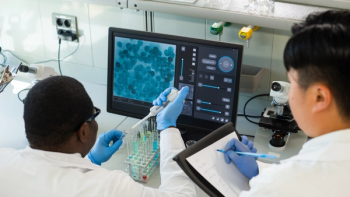
Pragmatic Therapy: Balancing Innovation, Cost, and Care
is spectacular science enough to guarantee success for new medicines?
The miracle of medicine is grounded in science – the historic engine of healthcare innovation. But is spectacular science enough to guarantee success for new medicines?
For many years, ground-breaking science was sufficient “cost of entry” into the medical marketplace. Scientific advances translated readily into blockbuster medicines because unmet patient need was so great. But in cardiovascular disease (CVD) today, we are at a different stage of medical discovery.
Although heart disease remains the #1 killer of women and men in the U.S., the need for new treatments to address risk of future cardiovascular events is perceived less urgent – in large part, due to the success of statin therapy during the past three decades.
Despite the availability of potent LDL-C lowering therapies, the need to prevent cardiovascular morbidity and mortality is more urgent than ever. The statistics in the U.S. are staggering. The American Heart Association (AHA) estimates that by the year 2035, more than 130 million Americans will have cardiovascular disease, at a cost exceeding $1 trillion – up from $555 billion in 2016. As of 2015, upwards of 40 percent of the U.S. population – more than 100 million Americans – suffered from some form of cardiovascular disease. AHA originally predicted, six years ago, that U.S. citizens wouldn’t reach that benchmark until 2030. It is a record-breaking milestone the system cannot afford and patients cannot abide.
Managing a public health crisis of this scale amid an evolving cardiovascular disease landscape, newly identified patient types, sometimes-confusing treatment guidelines, and an ever-growing roster of drugs that the healthcare system may not be able to afford and patients may not be able to effectively utilize, suggests a different societal need that goes beyond “breakthrough science.” It demands pragmatic therapy.
Pragmatic therapy embraces science and then goes beyond to consider real-world evidence and application. Science remains important. But physicians, payers, patients and society are asking drug innovators to view groundbreaking science as one part of a desired clinical output. Great science is the given. Now drug developers and companies must “get real.”
There are five tenets of pragmatic therapy:
1. Proven efficacy
2. Proven safety in clinical trials and real-world practice
3. Ease of use – tolerability, few drug-drug interactions, no complex dosing or method of delivery
4. Reasonable cost to the payer and to patients
5. Easy adaptability to a physician’s current practice patterns
In other words, pragmatic therapy enables physicians to make therapeutic decisions that are best for the patient, and mindful of cost to the system.
This approach to embracing new therapies is already playing out in other chronic disease states. For example, a pediatric asthma oral product became a blockbuster in a marketplace long dominated by inhalers. Despite long-entrenched competitor therapies, it offered a favorable safety profile, administration ease, and low cost – it was “pragmatic,” and became first-line therapy in many health plans. What worked to move the payer and prescriber was the combination of efficacy, safety, cost and ease of use by patients and caregivers.
In heart disease, we must now look at the urgent patient need that threatens our physical and economic wellbeing – and, we must look for therapeutic solutions that are more than scientific achievements alone; they must have pragmatic application. Statins play an indispensable role in reducing cardiovascular events. Yet, even patients whose cholesterol is well-controlled by statins remain at significant risk for a heart attack or stroke.
There is a need to address, and increase understanding of, this residual risk. What has changed is that we want solutions but not at any cost.
Innovation through the pragmatic patient-care lens demands that we continue to pursue science-based answers – to understand risk factors, and learn why CVD risk remains high for some, despite well-controlled LDL cholesterol. However, amazing science does not lead automatically to medicines being embraced by payers as in decades past.
The medical need remains great, and across all disease categories, pragmatic therapy is now the price of entry for unrestricted formulary access, physician enthusiasm and patient use. If we are to address the impact of non-communicable diseases such as asthma, cancer, diabetes and heart disease – on millions around the world, but perhaps more importantly, on our own parents, friends, families and communities – we must be pragmatic in seeking solutions. We must make it proven, practical and affordable.
Drug research and development – science – are essential to ensure new medications advance through the pipeline and regulatory system and eventually make a difference for patients. But let’s be reasonable. Invent it and they will come is no longer sufficient to secure payer favor. Pragmatic therapy will be driven by science and economics – real-world approaches to real-world concerns. We are entering a new phase of innovation that will make a mark on our greater wellbeing.
Craig Granowitz, M.D., Ph.D., is chief medical officer of Amarin Pharma, Inc.
Newsletter
Lead with insight with the Pharmaceutical Executive newsletter, featuring strategic analysis, leadership trends, and market intelligence for biopharma decision-makers.





